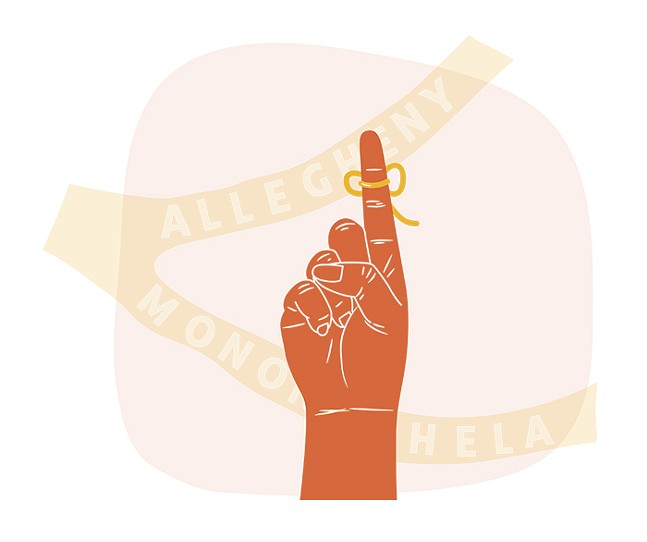During quieter hours at the coffee shop where I used to work, I’d often shoot the breeze with the other person on the bar. Once, when chatting with my manager about how to get to the South Side from Squirrel Hill, she imparted an important piece of Pittsburgh wisdom to me: it’s only three miles away, but you can’t (easily) get there from here.
Pittsburgh is a notoriously difficult city to navigate for newcomers. Unlike many other urban centers, it’s not built on a street grid. Streets end without warning, only to pick back up a block away. Sometimes, staircases technically function as continuations of streets. But it’s not an impossible city to traverse, and we’ve compiled some mnemonic devices — learning techniques to help with memorizing details — to orient you and get you where you need to go.
1. Forbes and Fifth avenues run one-way and parallel through Downtown and Oakland with only a few blocks between them. To make sure you’re heading in the right direction, remember: Fifth Avenue has an “i,” so it goes into Downtown. Forbes Avenue has an “o,” so it goes out of Downtown.
2. Confused which river is which? Take a look at the water color. The Monongahela starts with an “m,” so it’s a mud-based river (or, to be precise, silt), usually giving it a murky tint. The Allegheny, instead, is rock based, making its waters clearer.
3. But what if the colors are difficult to tell apart? Associate alphabetical order with north to south. “A” comes before “M” in the alphabet, so the Allegheny, which is parallel to the North Side, is the northern river, while the Monongahela, which is parallel to Station Square, is the southern river.
4. Which bus do I get on? It’s not the most precise system, but Pittsburgh’s Port Authority bus lines are generally numbered going counter-clockwise around the city, starting north of the Allegheny with the 1 and ending south of the Allegheny with the 93 stopping in Lawrenceville.
5. Which park is which? Schenley Park and Frick Park both flank Squirrel Hill. This time, associate alphabetical order with east to west. “F” comes before “S,” so Frick Park is to the east, and Schenley Park is to the west. (“E” for east and “F” for Frick are also alphabetical neighbors, if it’s easier to remember that way!)
6. Penn and Liberty avenues stretch through the Strip District side by side before distancing as they move through Lawrenceville. Penn, with two “N”s, runs north of Liberty and closer to the Allegheny, the northern river.
7. Having Sixth Street and Sixth Avenue in close proximity Downtown seems like poor urban design, but a little alliteration can go a long way. Sixth Street is shorter, spanning several blocks closer to the shore of the river.
8. The Sister Bridges are three similar looking, self-anchored suspension bridges along the Allegheny River. The birth dates of the people they’re named for stretch from east to west, oldest to most recent, starting with Rachel Carson in 1907, then Andy Warhol in 1928, and finally Roberto Clemente 1934.
9. Ellsworth Avenue and Walnut Street run parallel through Shadyside, but Ellsworth, which starts with “El,” runs closer to East Liberty, to the north.
10. N. Negley and S. Negley avenues are a little easier to tell apart since their relative directions are included in their names, but to remember where S. Negley ends, fall back on alliteration because S. Negley ends in Squirrel Hill.


